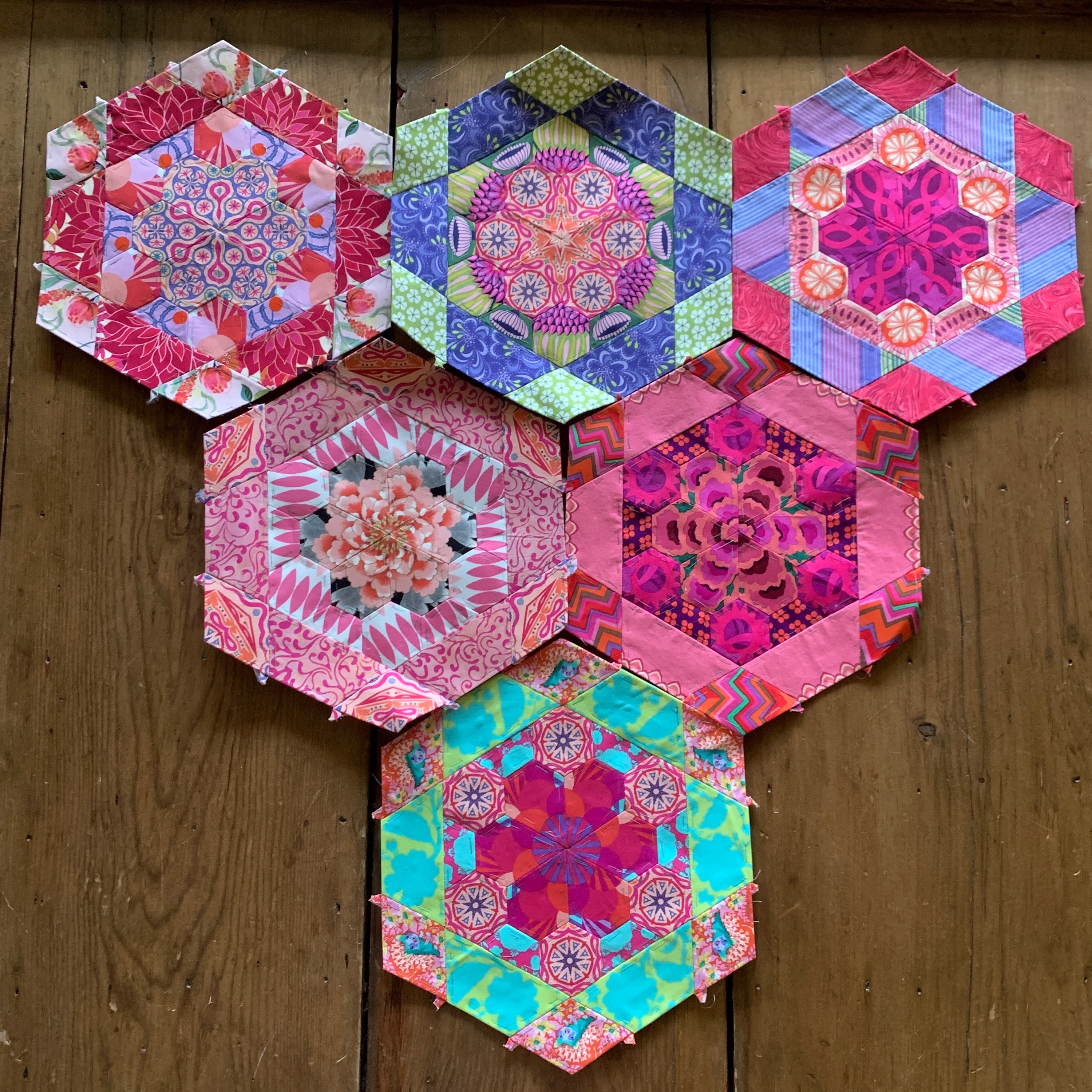
Making Templates
- Sara Chisholm
- Aug 8, 2023
- 2 min read
Many vendors who sell EPP papers also sell acrylic templates to go with their pieces. They may be solid or open with 1/4" or 3/8" seam allowances. They are nice for viewing how a motif fits in a shape and aligning for fussy cutting your fabric. The acrylic edges make it easy to cut your shapes using a small rotary cutter.
If you don't want to go to the expense of buying acrylic shapes, it's easy to make your own "cereal box" viewing templates and trace around them for cutting with small scissors . Sara has these for every size/shape of papers she owns - it's one of the first things she does when she starts a project with new shapes .
Follow along and she'll share how she makes them!
Find a piece of cardboard. Sara likes using cereal boxes best - they are stiff enough to withstand many tracings but light enough to cut through easily. In this example, she used an inner liner from a cardboard box that separated various parts in the box. She notes that corrugated cardboard doesn't work particularly well - it's a bit too thick and folds too easily in her sewing kit.

Using one of your paper pieces, trace the shape you want on the cardboard .

Add a seam allowance all the way around the piece. In this case, Sara is using a 1/4" , but if you prefer 3/8" or more, it's easy to set this at whatever measure you prefer.

Using your paper scissors, cut out the shape along the outside seam allowance lines.

Poke a hole near the center and cut lines out to the interior corners
of the original paper piece shape.

Then cut out to the inside line of the shape.

What you are left with is a viewing and tracing template. What you see on the inside is what will show on your finished piece. Trace around the outside with a pencil or water/air soluble pen and you have a cutting line that includes seam allowances.

We use small sharp scissors to cut along the trace line. We only cut along the lines, effectively making Swiss cheese of our fabric, rather than coming in to the line from an edge.
This allows for the MOST possible fussy cuts before a piece is discarded.

These small sharp scissors are our favorite! With a 2" blade and 4" overall size, they are small enough to pass airport security every time we have flown, but large enough to have comfortable finger holes. They are made by Karen Kay Buckley and have a serrated edge that cuts through fabric very nicely.

Basting is next! Thread or glue basting are the most common methods, and each has its own fans. We encourage sewers to try both and find the method that works best for them.

Here is an example of a thread basted hexagon.
Laura and Sara both thread baste but understand the appeal of the glue!

Sara stores her templates right in the bag with her paper pieces
so she's always grabbing the right one!
We hope these directions are clear, but if you have any questions, just comment on the post or drop us a line in the "ask us" section of the website !
Happy Template Making!






I like to use freezer paper as my window templates. (Same steps as you show). I also prefer 3/8" seam. The advantage of freezer paper is that once you isolate your design for fussy cutting, you can press it (iron) to your fabric for ease of cutting it out. And it can be reused multiple times.
Thanks for this tut! It's going to be really helpful for the Esther blocks!
Have you thought of linking your posts to Pinterest? I'd love to start a board with all of your blog posts and some inspiration pics in one place.